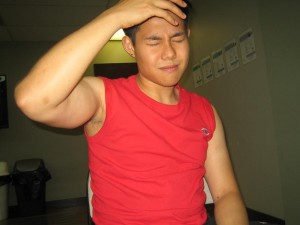Overview
Injuries sustained to the head should always be taken seriously as there might be harm to the brain. At times, this damage might not be clear for hours after the injury takes place.
Cracked skulls, brain compressions and concussions are tricky for a first aider to verify, and therefore, all injuries sustained to the head should be treated the same.
Symptoms and Signs

- Altered state of consciousness
- Eye troubles, double or blurred vision
- A throbbing or pounding headache
- Queasiness or nausea
- Losing balance and coordination
- Tingling sensation down the side of the body
- Loss of memory, particularly short-term memory (recent events)
- Loud breathing
- Draining of fluid from the ear or the nose
How you can help
- Assess the casualty
- Determine the casualty’s conscious state
- If not completely awake, place the casualty on the side in a recovery position
- Make sure that the airway is not blocked and check for signs of
- If conscious, assist the casualty to rest in a position that is comfortable for them
- Occasionally casualty’s who have sustained a head injury might become restless. Ask friends or relatives to calm and comfort the casualty. Think about phoning the police if the well-being of the casualty or others becomes endangered.
- Phone for an ambulance.
- Provide care until the emergency services arrive
- Wrap any wound with a disinfected bandage.
- If there is any fluid from the ears or nose, wrap the area with a disinfected dressing.
